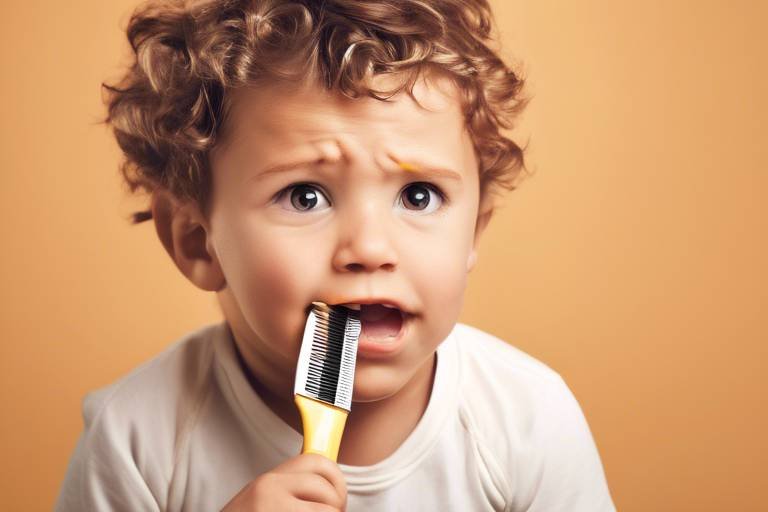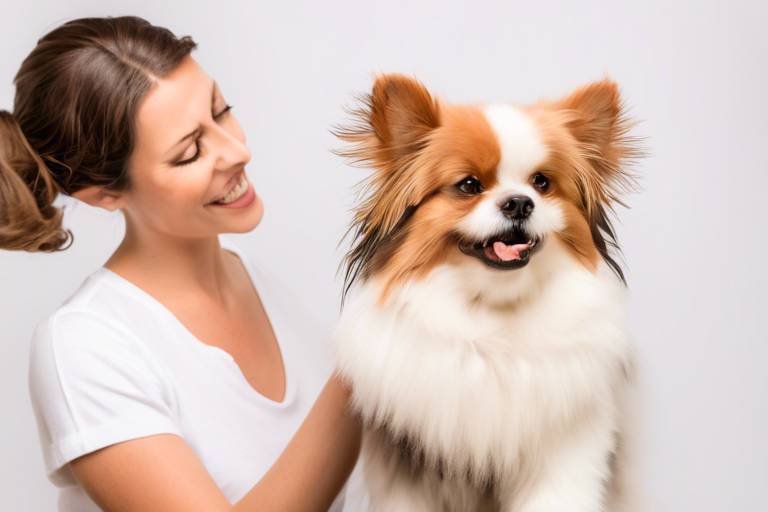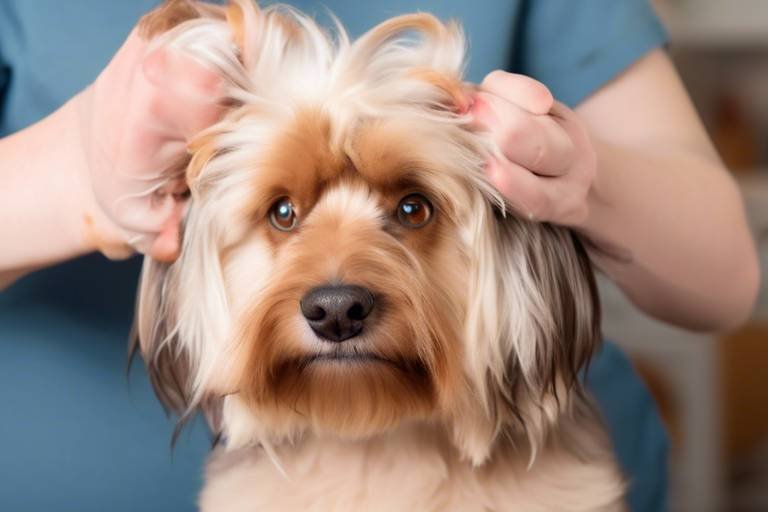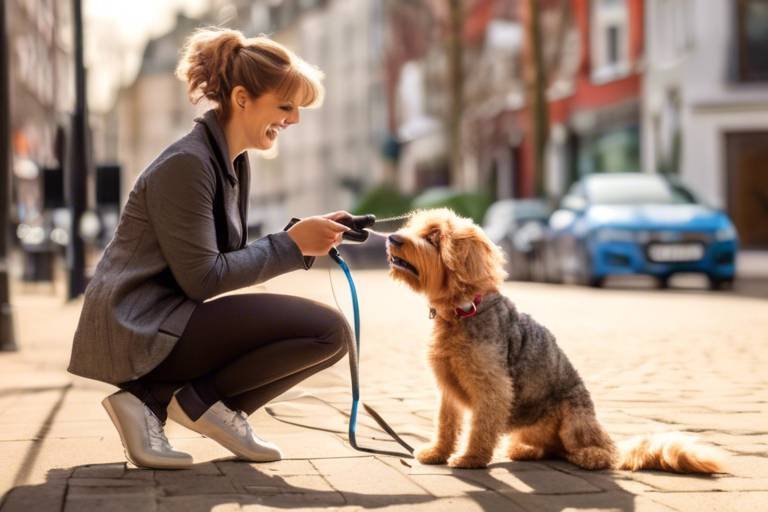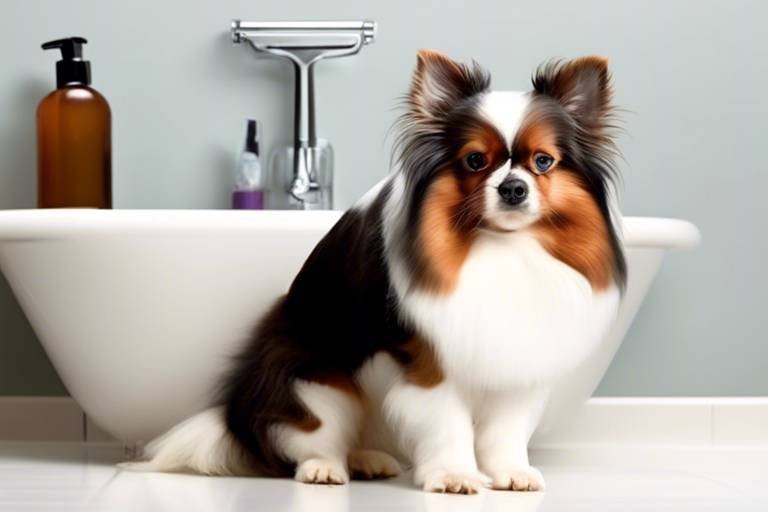How to Make Grooming a Positive Experience
Grooming your pet can often feel like a daunting task, but it doesn’t have to be! Imagine turning what some might see as a chore into a delightful bonding experience. The key is to transform grooming into a stress-free and enjoyable ritual for both you and your furry friend. By understanding your pet’s needs, creating a comfortable environment, and using positive reinforcement techniques, you can foster a stronger bond while promoting a healthier lifestyle for your pet. Let’s dive into some effective strategies to make grooming a positive experience!
Recognizing your pet's individual grooming needs is essential. Just like humans, pets have unique grooming requirements based on their breed, age, and health. For instance, a Golden Retriever will have different needs compared to a French Bulldog. Understanding these differences can help tailor a grooming routine that keeps them comfortable and happy. Take the time to research and learn about your pet’s specific grooming needs, as this knowledge is the first step toward a stress-free grooming experience.
A calm and inviting grooming space can significantly reduce anxiety for your pet. Consider setting up a dedicated grooming area that is free from distractions and stressors. Utilize soothing sounds, such as gentle music or white noise, to create a tranquil atmosphere. Familiar scents, like your pet's favorite blanket or a special spray, can also help them feel secure. Additionally, ensure the grooming surface is non-slip to prevent accidents and make your pet feel stable during the grooming process.
Using the appropriate grooming tools is crucial for your pet's comfort. Selecting brushes, clippers, and shampoos designed for their specific coat type can enhance the overall experience. For example, a slicker brush might work wonders for a long-haired breed, while a rubber curry brush can be perfect for short-haired dogs. Investing in high-quality tools not only makes grooming easier but also ensures your pet enjoys the process.
Different brushes serve various purposes. Understanding which type works best for your pet's coat can prevent discomfort and make grooming more effective. For instance, a wide-toothed comb is ideal for detangling, while a bristle brush is great for smoothing and shining. By choosing the right brush, you're not just making grooming easier; you're also showing your pet that you care about their comfort.
Using the right clippers and trimmers can minimize stress. Opt for quiet, low-vibration models to help ease your pet's anxiety during the grooming process. If your pet is particularly sensitive to noise, consider using a clipper with a sound-dampening feature. This small adjustment can make a world of difference in how your pet perceives grooming.
Consistency is key to making grooming a positive experience. Establishing a regular grooming schedule helps pets anticipate and adapt to the process, reducing fear and resistance. Think of it like brushing your teeth; the more you do it, the more familiar it becomes. Schedule grooming sessions at the same time each week, and soon your pet will view grooming as a normal part of their routine rather than a stressful event.
Incorporating positive reinforcement can transform grooming into a fun activity. Using treats, praise, and playtime can encourage good behavior and create positive associations with grooming. When your pet associates grooming with something enjoyable, they are more likely to cooperate. This not only makes the experience smoother but also strengthens the bond you share.
Treats can be a powerful motivator. Offering small rewards during grooming can help reinforce calm behavior and make your pet look forward to the experience. For example, give a treat after brushing a section of their coat or after a successful nail trim. This creates a positive feedback loop that encourages your pet to stay calm and relaxed.
Integrating play into grooming sessions can alleviate stress. Engaging your pet in short play breaks during grooming can help them associate grooming with fun and relaxation. For instance, you could take a few minutes to play with their favorite toy between brushing sessions. This not only breaks up the monotony but also keeps your pet's spirits high.
Being aware of your pet's stress signals is vital. Understanding their body language can help you adjust your grooming approach to ensure a more positive experience. If your pet starts to pant heavily, whine, or attempt to escape, these could be signs that they’re uncomfortable. Being attentive to these signals allows for timely adjustments during grooming.
Recognizing signs such as panting, whining, or attempting to escape can indicate your pet is uncomfortable. It's essential to watch for these behaviors and respond appropriately. If you notice any signs of distress, take a break and give your pet some time to relax.
Implementing calming strategies, such as gentle petting or taking breaks, can help soothe a stressed pet. Creating a more relaxed atmosphere can lead to a more enjoyable grooming session. Consider using calming sprays or diffusers designed for pets, or simply take a moment to cuddle and reassure them.
Post-grooming care is essential for reinforcing a positive experience. Taking time for cuddles or additional playtime can strengthen the bond between you and your pet after grooming. This is the perfect opportunity to show them that grooming is not just about looking good but also about spending quality time together.
Offering a special treat after grooming can create a positive association. This reinforces good behavior and makes your pet look forward to future grooming sessions. Consider giving them their favorite treat or a new toy as a reward for their cooperation.
Spending quality time with your pet after grooming can enhance your relationship. Engaging in activities they enjoy helps solidify grooming as a positive experience in their mind. Whether it’s a walk in the park or a cozy cuddle on the couch, these moments of connection are invaluable.
Q: How often should I groom my pet?
A: The frequency of grooming depends on your pet's breed and coat type. Long-haired breeds may require grooming several times a week, while short-haired breeds may only need it once a month.
Q: What should I do if my pet is afraid of grooming?
A: Start slowly and use positive reinforcement. Introduce grooming tools gradually and reward your pet for calm behavior.
Q: Can I groom my pet at home?
A: Yes! With the right tools and techniques, you can groom your pet at home. Just ensure you know their specific grooming needs.

Understanding Your Pet's Needs
Recognizing your pet's individual grooming needs is essential for creating a comfortable and enjoyable experience. Just like humans, pets have unique characteristics and requirements based on their breed, size, and coat type. For instance, a fluffy Golden Retriever demands a different grooming routine compared to a sleek Dachshund. Understanding these differences can help you tailor a grooming plan that keeps your furry friend looking and feeling their best.
When considering your pet's grooming needs, it’s important to take into account factors such as:
- Breed Specifics: Each breed has unique grooming requirements. Long-haired breeds like Shih Tzus require regular brushing to prevent matting, while short-haired breeds may need less frequent grooming.
- Skin Sensitivity: Some pets have sensitive skin or allergies that necessitate the use of specific shampoos and grooming products. Always consult your vet if you're unsure.
- Age and Health: Older pets or those with health issues may require gentler grooming techniques and more frequent breaks to ensure their comfort.
Moreover, it’s crucial to observe your pet's behavior during grooming sessions. Are they relaxed and cooperative, or do they seem anxious and restless? Paying attention to these cues can help you adjust your approach. For example, if your pet shows signs of discomfort, it might be time to switch to a softer brush or take a break. By being attentive to their needs, you can foster a more positive grooming experience.
In addition, don't forget to consider your pet's preferences. Some pets enjoy water and may love bath time, while others might dread it. Always strive to make grooming a positive experience by incorporating their favorite toys, treats, or even a little playtime before or after the session. The goal is to create a routine that feels less like a chore and more like a bonding activity.
Ultimately, the key to understanding your pet's needs lies in observing their behavior, recognizing their unique traits, and being adaptable. By doing so, you’ll not only keep your pet looking great but also strengthen the bond you share, making grooming a delightful experience for both of you.

Creating a Comfortable Environment
Creating a comfortable environment for grooming is essential to ensure that your pet feels safe and relaxed during the process. Think of it as setting the stage for a delightful performance; the right atmosphere can make all the difference! Begin by choosing a quiet space in your home, away from distractions and loud noises. This will help your pet feel more at ease, as they won’t be overwhelmed by sudden sounds or movements.
Next, consider incorporating soothing elements into the grooming area. Soft music or calming sounds can work wonders in reducing anxiety. Imagine how you feel when you listen to your favorite tunes—your pet can have a similar experience! Additionally, familiar scents can also help your furry friend feel secure. You might want to use a blanket or a toy that smells like home, creating a comforting environment that eases their nerves.
Don't forget about the physical space itself. A non-slip surface is crucial, especially for pets that may be anxious and prone to slipping. You can use a rubber mat or a soft blanket to provide a stable footing. This not only enhances safety but also gives your pet a sense of security while being groomed. Remember, a little preparation goes a long way in making grooming a positive experience.
Lastly, ensure that the grooming tools are within reach and organized neatly. This not only saves time but also minimizes any sudden movements that could startle your pet. A well-organized space can communicate to your pet that grooming is a routine part of life, which can help reduce their anxiety.
In summary, creating a comfortable environment involves:
- Choosing a quiet, distraction-free space
- Incorporating soothing sounds and familiar scents
- Using a non-slip surface for safety
- Keeping grooming tools organized and within reach
By paying attention to these details, you’re not just grooming your pet; you’re also building trust and enhancing your bond. A little effort to create a comfortable environment can turn grooming from a dreaded chore into a cherished bonding experience for both of you!
Q1: How can I tell if my pet is comfortable during grooming?
A1: Look for signs such as relaxed body language, wagging tails, or calm breathing. If your pet seems tense or tries to escape, it may indicate discomfort.
Q2: What should I do if my pet becomes stressed during grooming?
A2: Take a break, offer gentle petting, or use calming techniques such as soft music or treats to help soothe your pet.
Q3: How often should I groom my pet?
A3: The frequency of grooming depends on the breed and coat type. Generally, long-haired breeds may require grooming several times a week, while short-haired breeds may need it less frequently.
Q4: Are there specific tools I should use for my pet's grooming?
A4: Yes! Different breeds require different tools. For example, a slicker brush is great for long-haired dogs, while a rubber curry brush works well for short-haired breeds.
Choosing the Right Tools
When it comes to grooming your beloved pet, choosing the right tools is absolutely crucial for ensuring a positive experience. Imagine trying to style your hair with the wrong brush; it would be uncomfortable and frustrating, right? The same goes for our furry friends! Each pet has its own unique coat type, and using the appropriate tools can make all the difference. Not only does it enhance their comfort, but it also makes the grooming process more effective.
First, let's talk about brushes and combs. Different brushes serve various purposes, and understanding which type works best for your pet's coat can prevent discomfort and make grooming a breeze. For instance, if your pet has a long, flowing coat, a slicker brush might be your best bet. On the other hand, if your furry companion has a short coat, a bristle brush could do the trick. To help you out, here's a quick comparison of common brush types:
| Brush Type | Best For | Benefits |
|---|---|---|
| Slicker Brush | Long-haired breeds | Removes tangles and mats |
| Bristle Brush | Short-haired breeds | Distributes natural oils |
| Undercoat Rake | Double-coated breeds | Removes loose undercoat |
| Rubber Brush | All breeds | Gentle and great for massage |
Next up are clippers and trimmers. Using the right clippers can significantly minimize stress for your pet. Just like you wouldn’t want to use a loud, clunky machine on your hair, pets don’t appreciate noisy clippers either. Opt for quiet, low-vibration models to help ease your pet's anxiety during grooming sessions. It's also important to choose the right blade size for your pet's coat length; a shorter blade is ideal for close trims, while a longer blade works well for fluffier coats.
Finally, don’t forget about shampoos and conditioners! Selecting products specifically formulated for your pet’s skin and coat type can enhance the grooming experience. For example, if your pet has sensitive skin, look for hypoallergenic options. If they have a thick, double coat, a moisturizing shampoo can do wonders. Always remember to read the labels and avoid any ingredients that could irritate their skin.
In conclusion, investing in the right grooming tools is like setting the stage for a successful performance. The right brushes, clippers, and shampoos not only make the process smoother but also ensure that your pet feels comfortable and cared for. So, before you dive into grooming, take a moment to assess your toolkit. Your furry friend will thank you for it!
Brushes and Combs
When it comes to grooming your pet, selecting the right brushes and combs is essential for ensuring a comfortable and effective grooming experience. Just like humans have different hair types that require specific tools, pets also have unique grooming needs based on their coat type. Understanding these differences can make a world of difference in how your pet perceives grooming sessions.
For instance, a short-haired breed may only need a simple rubber brush to remove loose fur and distribute natural oils, while a long-haired breed might require a combination of a slicker brush to untangle knots and a wide-toothed comb for finishing touches. Here’s a quick breakdown of some common types of brushes and their ideal uses:
| Type of Brush | Best For | Key Features |
|---|---|---|
| Slicker Brush | Long-haired breeds | Removes mats and tangles |
| Pin Brush | Medium to long-haired breeds | Distributes oils and removes loose fur |
| Rubber Brush | Short-haired breeds | Gentle on skin, stimulates circulation |
| Undercoat Rake | Double-coated breeds | Removes loose undercoat fur |
Using the wrong type of brush can lead to discomfort, making your pet dread grooming time. For example, if you use a slicker brush on a short-haired dog, it may not only be ineffective but could also irritate their skin. Therefore, it’s crucial to choose tools that match your pet's specific needs.
Moreover, the technique you use while brushing is just as important as the tools themselves. Always start brushing gently and work your way up to areas that may be more tangled or matted. If your pet seems uneasy, take a moment to reassure them with a soft voice or gentle petting. This can help them associate grooming with positive feelings rather than anxiety.
Lastly, regular grooming not only keeps your pet looking their best but also helps you check for any unusual lumps, bumps, or skin issues that might need veterinary attention. So, equip yourself with the right brushes and combs, and turn grooming into a bonding experience that both you and your pet can enjoy!
- How often should I groom my pet? It depends on the breed and coat type. Long-haired breeds may need grooming several times a week, while short-haired breeds might only need it once a month.
- What if my pet hates being groomed? Start slowly and use positive reinforcement techniques like treats and praise to create a more enjoyable experience.
- Can I use human grooming tools on my pet? It's best to use tools specifically designed for pets, as human tools may not be safe or effective.
Clippers and Trimmers
When it comes to grooming your furry friend, play a crucial role in ensuring a comfortable and efficient experience. Choosing the right tools can make all the difference, not just for your pet's appearance but also for their overall well-being. Imagine trying to cut your own hair with a pair of dull scissors—frustrating, right? The same principle applies to your pet. Using inappropriate or noisy tools can elevate their stress levels, making grooming a dreaded chore instead of a bonding experience.
So, what should you look for in clippers and trimmers? First and foremost, opt for models that are quiet and low-vibration. These features are essential in minimizing anxiety, especially for pets that are already skittish. A gentle hum can be much less intimidating than a loud roar, turning what could be a panic-inducing experience into a calm and collected one. Additionally, consider the size and weight of the clippers; lightweight models are easier to maneuver and less tiring for you during longer grooming sessions.
Another factor to consider is the type of blade used in the clippers. Some pets have thick fur while others have fine hair, and different blades serve various purposes. For instance, a ceramic blade can stay cooler and sharper for longer, making it an excellent choice for extended grooming sessions. On the other hand, stainless steel blades are durable and easy to clean. Understanding your pet's coat type can guide you in selecting the best blade for their needs.
Here’s a quick comparison of some popular types of clippers and their best uses:
| Type of Clipper | Best For | Noise Level | Blade Type |
|---|---|---|---|
| Pet Clippers | All coat types | Low | Ceramic or Stainless Steel |
| Trimmers | Detail work and sensitive areas | Very Low | Stainless Steel |
| Heavy-Duty Clippers | Thick or matted coats | Moderate | Ceramic |
It's also important to maintain your clippers and trimmers properly. Regular cleaning and oiling of the blades not only prolong their life but also ensure a smooth grooming experience. Clogged or dull blades can tug at the hair, causing discomfort and stress for your pet. A quick wipe after each use and a thorough clean every few sessions can go a long way.
In conclusion, selecting the right clippers and trimmers is more than just a matter of preference; it’s about ensuring a stress-free grooming experience for your beloved pet. By investing in quality tools that are suited to your pet’s needs, you’re not just grooming; you’re building trust and enhancing your bond. Remember, a happy pet makes for a happy owner!
- What type of clippers should I use for my dog?
It depends on your dog's coat type. For thick or matted fur, consider heavy-duty clippers, while fine-haired breeds may do well with standard pet clippers.
- How often should I groom my pet?
This varies by breed and coat type, but a general rule is every 4-6 weeks. Regular grooming helps prevent matting and keeps your pet comfortable.
- Are there any specific brands you recommend?
Brands like Andis, Wahl, and Oster are well-regarded for their quality and performance. Always look for reviews and recommendations based on your pet's needs.
Establishing a Routine
When it comes to grooming your pet, consistency is key. Establishing a regular grooming routine not only helps your furry friend anticipate what's coming but also makes the entire process smoother for both of you. Think of it like a dance; when you know the steps, everything flows better. By grooming your pet at the same time and on the same days each week, you create a predictable environment that can significantly reduce their anxiety.
Imagine waking up every Saturday morning to the sound of your favorite song; it sets the tone for the day, right? Similarly, when your pet knows grooming is part of their weekly schedule, they can prepare themselves mentally for it. This routine can be as simple as a quick brush every Tuesday evening or a full grooming session every Sunday afternoon. The key is to stick with it! Over time, your pet will learn to associate grooming with a normal, non-threatening part of their life.
To help you establish this routine, consider the following tips:
- Choose a specific day and time: Consistency is crucial. Pick a day and time that works best for both you and your pet.
- Start small: If your pet is new to grooming, begin with short sessions. Gradually increase the duration as they become more comfortable.
- Use a timer: Set a timer for each grooming session to keep it manageable. This way, both you and your pet know when it will end.
In addition to regular grooming, consider incorporating playtime and treats into the routine. This not only makes grooming more enjoyable but also strengthens the bond between you and your pet. For instance, after each grooming session, reward them with their favorite treat or engage in a fun game. This positive reinforcement will help them look forward to grooming instead of dreading it.
Ultimately, establishing a grooming routine is about creating a safe space for your pet. With time, patience, and a little creativity, grooming can transform from a dreaded chore into a cherished bonding experience. So, why not start today? Your pet will thank you with wagging tails and purring cuddles!
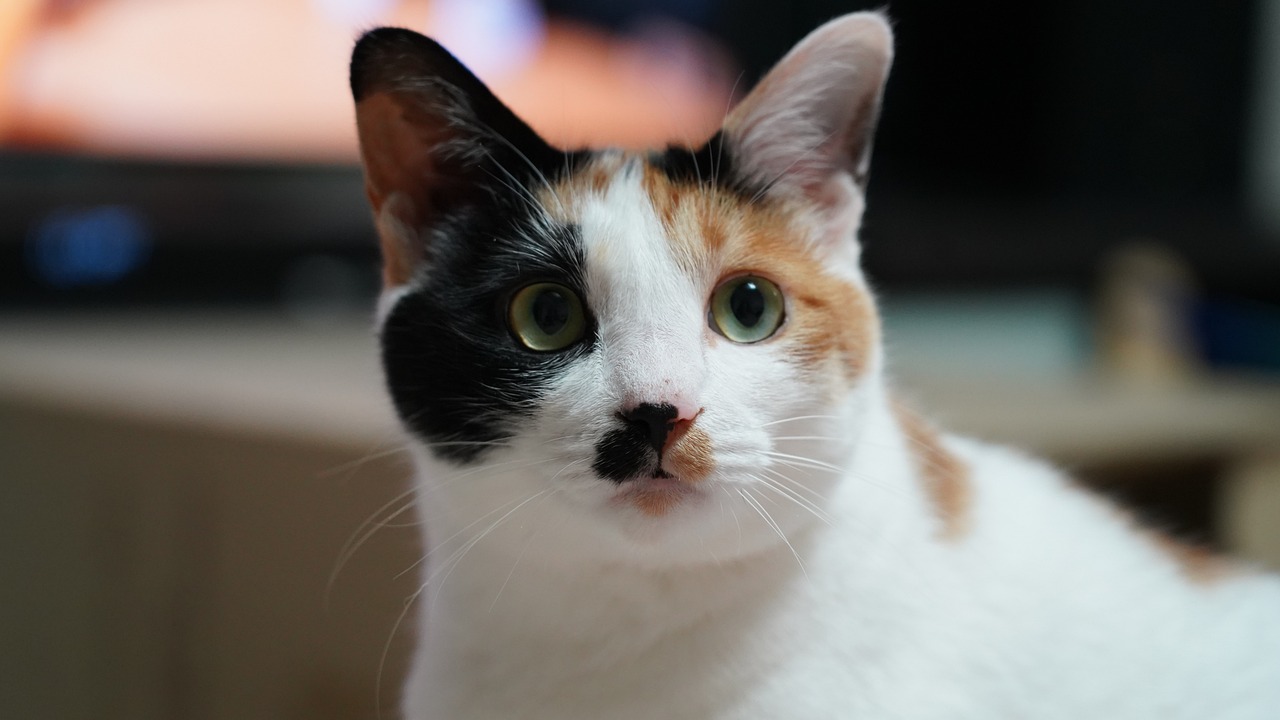
Positive Reinforcement Techniques
When it comes to grooming your pet, the power of positive reinforcement cannot be overstated. Imagine if every time you did something you didn’t particularly enjoy, you received a treat or a compliment. Wouldn’t that make the experience a bit more bearable? The same principle applies to our furry friends. By incorporating into your grooming routine, you can transform what might be a stressful experience into a fun and enjoyable one.
First, let’s talk about the magic of treats. Using small, tasty rewards during grooming sessions can be a game changer. For instance, if your pet sits still while you brush their fur, reward them with a treat. This not only reinforces calm behavior but also helps them associate grooming with something positive. Over time, your pet will start to look forward to these moments, eagerly anticipating the treats that come with them. Just be sure to choose treats that are healthy and appropriate for your pet's diet to avoid any unwanted surprises later!
In addition to treats, praise plays a crucial role in positive reinforcement. Your enthusiastic “Good boy!” or “What a brave girl!” can work wonders. Pets are incredibly attuned to our voices and emotions. When they hear you praising them, it boosts their confidence and encourages them to behave well during grooming. Pairing your praise with physical affection, like gentle petting or belly rubs, can further enhance the experience, making it a bonding moment rather than just a chore.
Another effective strategy is to incorporate playtime into your grooming routine. After a few minutes of brushing or clipping, take a break and engage your pet in a quick game of fetch or tug-of-war. This not only breaks the monotony of grooming but also helps your pet associate the process with fun and excitement. Think of it this way: just like kids, pets thrive on variety! They don’t want to sit still for too long; they want to play and have fun.
To further illustrate how positive reinforcement can work, let’s look at a simple table summarizing the techniques:
| Technique | Description | Benefits |
|---|---|---|
| Treats | Offer small rewards during grooming. | Encourages calm behavior and positive associations. |
| Praise | Use enthusiastic verbal affirmations. | Boosts confidence and reinforces good behavior. |
| Playtime | Incorporate short play breaks. | Makes grooming fun and less stressful. |
Remember, patience is key! Just like humans, pets need time to adjust to new routines. If your pet is initially resistant to grooming, don’t get discouraged. Gradually introduce these positive reinforcement techniques, and soon you’ll see a noticeable change in their behavior. Before you know it, grooming will become a cherished time for both you and your furry companion.
Q: How long should grooming sessions last?
A: Start with short sessions of about 5-10 minutes, gradually increasing the time as your pet becomes more comfortable.
Q: What if my pet doesn’t respond to treats?
A: Every pet is different. Try varying the treats or using different forms of positive reinforcement, like praise or playtime.
Q: Is it okay to groom my pet every day?
A: It depends on the breed and coat type. Some pets require daily grooming, while others may only need it weekly. Always check with your veterinarian or a professional groomer for guidance.
Using Treats Wisely
This article explores effective strategies to transform grooming into a stress-free and enjoyable experience for both pets and their owners, ensuring a positive bond and a healthier lifestyle.
Recognizing your pet's individual grooming needs is essential. Different breeds have unique requirements, and understanding these can help tailor a grooming routine that keeps them comfortable and happy.
A calm and inviting grooming space can significantly reduce anxiety. Utilizing soothing sounds, familiar scents, and a non-slip surface can help your pet feel secure during grooming sessions.
Using the appropriate grooming tools is crucial for your pet's comfort. Selecting brushes, clippers, and shampoos designed for their specific coat type can enhance the overall experience.
Different brushes serve various purposes. Understanding which type works best for your pet's coat can prevent discomfort and make grooming more effective.
Using the right clippers and trimmers can minimize stress. Opt for quiet, low-vibration models to help ease your pet's anxiety during the grooming process.
Consistency is key to making grooming a positive experience. Establishing a regular grooming schedule helps pets anticipate and adapt to the process, reducing fear and resistance.
Incorporating positive reinforcement can transform grooming into a fun activity. Using treats, praise, and playtime can encourage good behavior and create positive associations with grooming.
When it comes to making grooming a pleasant experience, can be a game changer. Treats are not just rewards; they are powerful motivators that can help your pet associate grooming with something positive. Imagine your furry friend getting a tasty treat every time they sit still during a grooming session. This simple act can shift their perception of grooming from a chore to a delightful experience.
But how do you use treats effectively? Here are some strategies:
- Timing is Everything: Offer treats at the right moments—right after a successful grooming step or when your pet remains calm. This timing reinforces the behavior you want to encourage.
- Small and Tasty: Choose small, soft treats that are easy for your pet to chew. This way, you can give them multiple rewards without filling them up too quickly.
- Mix It Up: Use a variety of treats to keep things interesting. Just like us, pets can get bored with the same flavors. Rotate between different treats to maintain their enthusiasm.
Additionally, consider incorporating treats into a reward system. For instance, if your pet successfully completes a grooming session, they earn a special treat that they only receive after grooming. This not only motivates them but also creates a sense of anticipation. You might even find that your pet starts to look forward to grooming sessions, wagging their tail in excitement rather than cowering in fear.
Remember, the goal is to create a positive association. If your pet knows that grooming leads to delicious rewards, they’ll be more likely to cooperate in the future. So, the next time you prepare for a grooming session, think about how you can use treats wisely to make it a truly enjoyable experience for both you and your pet!
Being aware of your pet's stress signals is vital. Understanding their body language can help you adjust your grooming approach to ensure a more positive experience.
Recognizing signs such as panting, whining, or attempting to escape can indicate your pet is uncomfortable. Being attentive to these signals allows for timely adjustments during grooming.
Implementing calming strategies, such as gentle petting or taking breaks, can help soothe a stressed pet. Creating a more relaxed atmosphere can lead to a more enjoyable grooming session.
Post-grooming care is essential for reinforcing a positive experience. Taking time for cuddles or additional playtime can strengthen the bond between you and your pet after grooming.
Offering a special treat after grooming can create a positive association. This reinforces good behavior and makes your pet look forward to future grooming sessions.
Spending quality time with your pet after grooming can enhance your relationship. Engaging in activities they enjoy helps solidify grooming as a positive experience in their mind.
Q: How often should I groom my pet?
A: The frequency of grooming depends on your pet's breed, coat type, and lifestyle. Long-haired breeds may require grooming several times a week, while short-haired breeds may only need it once a month.
Q: What if my pet hates grooming?
A: Start slowly and use positive reinforcement techniques like treats and praise. Gradually increase the duration of grooming sessions to help them get used to the process.
Q: Can I groom my pet at home?
A: Yes! With the right tools and knowledge, you can groom your pet at home. However, for certain breeds or specific grooming needs, consider consulting a professional groomer.
Incorporating Playtime
Integrating playtime into your grooming sessions can be a game-changer for both you and your pet. Imagine this: you’re all set for a grooming session, but instead of it feeling like a chore, it becomes a fun-filled activity! By incorporating play, you not only ease your pet’s anxiety but also create a positive atmosphere that they’ll associate with grooming. It’s like turning a daunting task into a delightful adventure!
So, how do you effectively incorporate playtime during grooming? Start by breaking up the grooming process into manageable segments. For instance, you can groom your pet for a few minutes, then take a short break to play with their favorite toy. This not only gives your pet something to look forward to but also allows them to release any built-up tension. Think of it as a grooming marathon where you mix in fun pit stops!
Another great way to incorporate play is through interactive games. You could use a tug toy or a ball to engage your pet right after a grooming segment. This not only distracts them from any discomfort they might feel but also reinforces the idea that grooming leads to fun. You might even find that your pet starts to enjoy the grooming process more, eagerly anticipating the playtime that follows!
Here are some playful ideas to consider:
- Fetch: After brushing, throw a toy and let them chase it. This can lighten the mood significantly.
- Hide and Seek: Hide treats around the grooming area and let your pet find them. This adds an element of surprise and excitement!
- Short Training Sessions: Incorporate basic commands or tricks during breaks. It’s a fun way to bond and reinforce good behavior.
Ultimately, the key is to keep the atmosphere light and enjoyable. By using playtime as a reward and distraction, you can transform grooming from a stressful obligation into a cherished bonding experience. Remember, a happy pet makes for a happy owner, and integrating playtime is a fantastic way to achieve that!
Q: How often should I groom my pet?
A: The frequency of grooming depends on your pet's breed and coat type. For long-haired breeds, weekly grooming is ideal, while short-haired breeds may only need it monthly.
Q: What if my pet hates grooming?
A: Start slow, using positive reinforcement techniques like treats and playtime to create a more enjoyable experience. Gradually introduce grooming tools to help them get used to the process.
Q: Can I groom my pet at home?
A: Absolutely! With the right tools and techniques, you can groom your pet at home. Just make sure to educate yourself on the specific needs of your pet's breed.
Q: How do I know if my pet is stressed during grooming?
A: Look for signs such as panting, whining, or trying to escape. If you notice these signs, take a break and try to calm your pet before continuing.
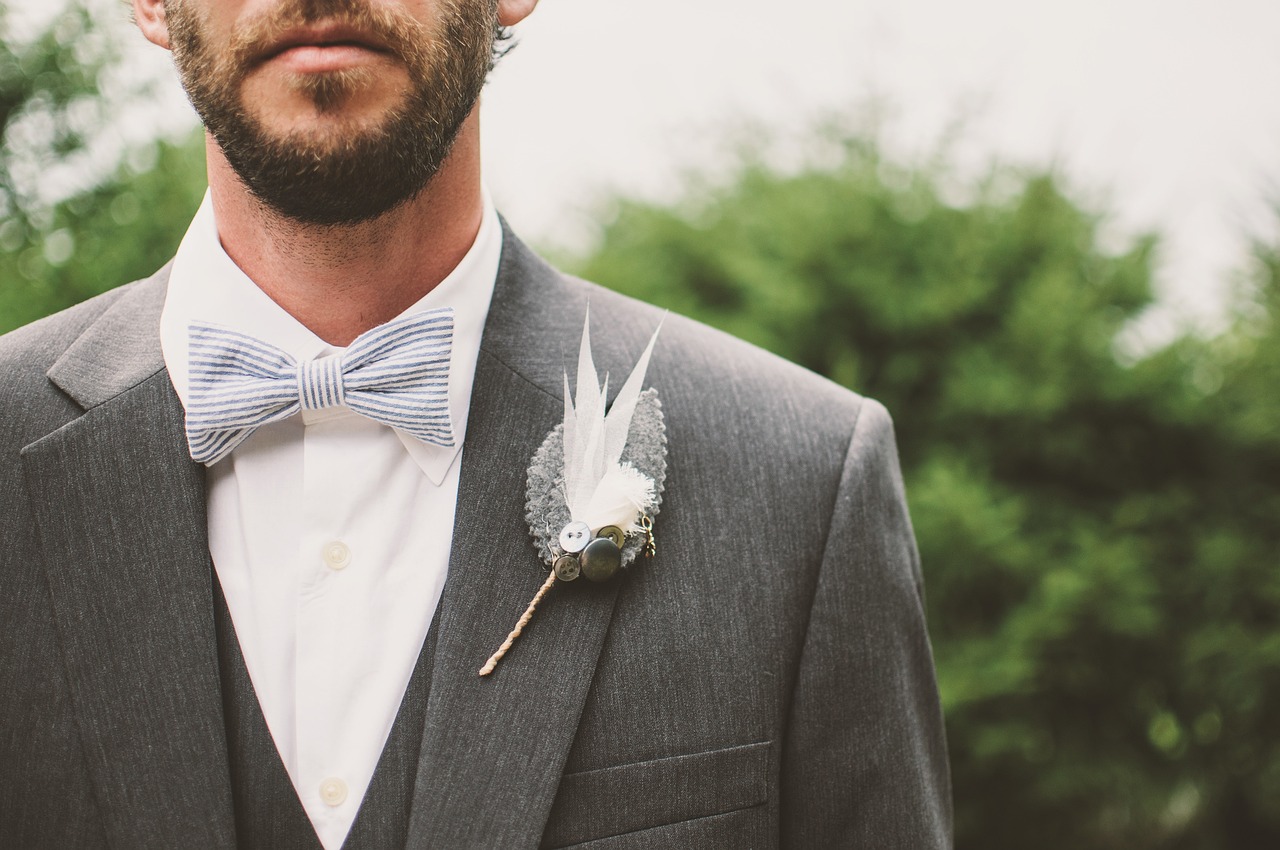
Recognizing Signs of Stress
Understanding your pet's emotional state is crucial for a successful grooming experience. Just like humans, pets can feel anxious or stressed, especially during grooming sessions, which can be unfamiliar or uncomfortable for them. Being able to recognize the signs of stress can make a significant difference in how you approach grooming. After all, a calm pet is not only easier to groom but also more likely to enjoy the process.
Pets communicate their discomfort through body language, vocalizations, and behavior. For instance, if your furry friend starts to pant excessively or whine, it’s a clear indication that they might be feeling overwhelmed. Additionally, if they attempt to escape or hide, these actions are signals that they are not comfortable with the situation. Here are some common stress indicators to watch for:
- Panting: Rapid breathing can indicate anxiety.
- Whining or Barking: Vocalizations often signal distress.
- Attempting to Escape: Trying to run away can show a desire to avoid grooming.
- Tense Body Language: A stiff posture or tucked tail is a sign of discomfort.
Being attentive to these signs allows you to adjust your grooming approach promptly. For example, if you notice your pet is panting, it may be time to take a break. Gentle petting or soothing words can help ease their anxiety. Creating a more relaxed atmosphere can lead to a more enjoyable grooming session for both of you.
Incorporating calming strategies can also be beneficial. Techniques such as using calming music, providing a favorite toy, or even using a special grooming spray designed to soothe pets can help create a more tranquil environment. Remember, the goal is to make grooming a positive experience, and recognizing stress signals is the first step in achieving that.
By paying close attention to your pet's behavior and making necessary adjustments, you can transform grooming from a stressful ordeal into a bonding experience. The more you understand your pet's needs, the better equipped you will be to handle any challenges that arise during grooming.
Q: How can I tell if my pet is stressed during grooming?
A: Look for signs such as panting, whining, attempting to escape, or tense body language. These signals indicate your pet may be uncomfortable.
Q: What should I do if my pet shows signs of stress?
A: If you notice signs of stress, take a break, offer gentle reassurance, and consider using calming techniques like soothing music or breaks for playtime.
Q: Can I use treats to help with my pet's anxiety during grooming?
A: Absolutely! Using treats as positive reinforcement can help create a more enjoyable experience for your pet and encourage calm behavior.
Q: Is it normal for pets to dislike grooming?
A: Yes, many pets may not enjoy grooming initially. However, with consistent positive experiences, they can learn to associate grooming with comfort and care.
Common Stress Indicators
This article explores effective strategies to transform grooming into a stress-free and enjoyable experience for both pets and their owners, ensuring a positive bond and a healthier lifestyle.
Recognizing your pet's individual grooming needs is essential. Different breeds have unique requirements, and understanding these can help tailor a grooming routine that keeps them comfortable and happy.
A calm and inviting grooming space can significantly reduce anxiety. Utilizing soothing sounds, familiar scents, and a non-slip surface can help your pet feel secure during grooming sessions.
Using the appropriate grooming tools is crucial for your pet's comfort. Selecting brushes, clippers, and shampoos designed for their specific coat type can enhance the overall experience.
Different brushes serve various purposes. Understanding which type works best for your pet's coat can prevent discomfort and make grooming more effective.
Using the right clippers and trimmers can minimize stress. Opt for quiet, low-vibration models to help ease your pet's anxiety during the grooming process.
Consistency is key to making grooming a positive experience. Establishing a regular grooming schedule helps pets anticipate and adapt to the process, reducing fear and resistance.
Incorporating positive reinforcement can transform grooming into a fun activity. Using treats, praise, and playtime can encourage good behavior and create positive associations with grooming.
Treats can be a powerful motivator. Offering small rewards during grooming can help reinforce calm behavior and make your pet look forward to the experience.
Integrating play into grooming sessions can alleviate stress. Engaging your pet in short play breaks can help them associate grooming with fun and relaxation.
Being aware of your pet's stress signals is vital. Understanding their body language can help you adjust your grooming approach to ensure a more positive experience.
Recognizing the signs that your pet is feeling stressed during grooming is crucial for ensuring a positive experience. Pets, much like humans, communicate their discomfort through various behaviors. Some common indicators include:
- Panting: Excessive panting can indicate anxiety or discomfort.
- Whining or Whimpering: Vocalizations may signal that your pet is not happy with the situation.
- Attempting to Escape: If your pet is trying to get away or hide, it's a clear sign they are feeling stressed.
- Tense Body Language: Look for stiff posture, tucked tails, or flattened ears as signs of unease.
Understanding these indicators is essential for adjusting your grooming techniques. For instance, if you notice your pet panting heavily, it might be time to take a break, give them some water, or even switch to a more soothing grooming method. By being attentive to their signals, you can create a more comfortable and enjoyable grooming experience, which ultimately fosters a stronger bond between you and your pet.
Post-grooming care is essential for reinforcing a positive experience. Taking time for cuddles or additional playtime can strengthen the bond between you and your pet after grooming.
Offering a special treat after grooming can create a positive association. This reinforces good behavior and makes your pet look forward to future grooming sessions.
Spending quality time with your pet after grooming can enhance your relationship. Engaging in activities they enjoy helps solidify grooming as a positive experience in their mind.
Q: How often should I groom my pet?
A: The frequency of grooming depends on your pet's breed and coat type. Long-haired breeds may need grooming several times a week, while short-haired breeds may only need it once a month.
Q: What should I do if my pet becomes aggressive during grooming?
A: If your pet shows signs of aggression, it's important to stop and reassess. You may need to consult a professional groomer or trainer to help ease their anxiety.
Q: Can grooming be a bonding experience?
A: Absolutely! Regular grooming can strengthen the bond between you and your pet, especially when combined with positive reinforcement and aftercare.
Strategies to Calm a Stressed Pet
When your furry friend starts to show signs of stress during grooming, it's crucial to have a few strategies up your sleeve to help them relax. Just like humans, pets can feel overwhelmed, and recognizing this is the first step toward a smoother grooming experience. One effective method is to create a calming environment. This can be achieved by playing soft music or using a white noise machine to drown out any sudden sounds that might startle your pet. Think of it as creating a cozy little spa retreat for them!
Another strategy is to take breaks. If you notice your pet becoming anxious, pause the grooming session and give them a moment to breathe. During this time, you can gently pet them or offer a favorite toy. This not only provides a moment of relief but also helps to break the grooming into manageable chunks, reducing the overall stress. Remember, patience is key! Just like how we sometimes need a breather during a long task, pets benefit from short, relaxing breaks too.
Additionally, consider using calming products such as anxiety wraps, pheromone diffusers, or even calming treats. These can work wonders in soothing your pet's nerves. For instance, anxiety wraps apply gentle pressure that can help your pet feel more secure, much like a comforting hug. Make sure to consult your veterinarian before introducing any new products to ensure they're safe for your pet.
Moreover, engaging in gentle training techniques can also help. Teaching your pet basic commands like "sit" and "stay" during grooming can provide them with a sense of control and predictability. When they understand what to expect, they are less likely to feel anxious. It's like giving them a little roadmap for the grooming journey!
Lastly, don't underestimate the power of your own calm demeanor. Pets are incredibly intuitive and can pick up on your emotions. If you approach grooming with a relaxed attitude, it can help your pet feel more at ease. You can think of it as a dance; if one partner is anxious, the other will likely feel that tension. So, take a deep breath, smile, and let your positive energy flow!
- What are some signs that my pet is stressed during grooming? Look for signs such as panting, whining, or trying to escape. These can indicate discomfort.
- How can I help my pet get used to grooming? Start slowly by introducing grooming tools and allowing your pet to sniff them. Gradually increase the duration of grooming sessions.
- Are there specific products that can help calm my pet? Yes, products like anxiety wraps, pheromone diffusers, and calming treats can be effective.
- How often should I groom my pet? This depends on the breed and coat type. Long-haired breeds may require more frequent grooming compared to short-haired ones.
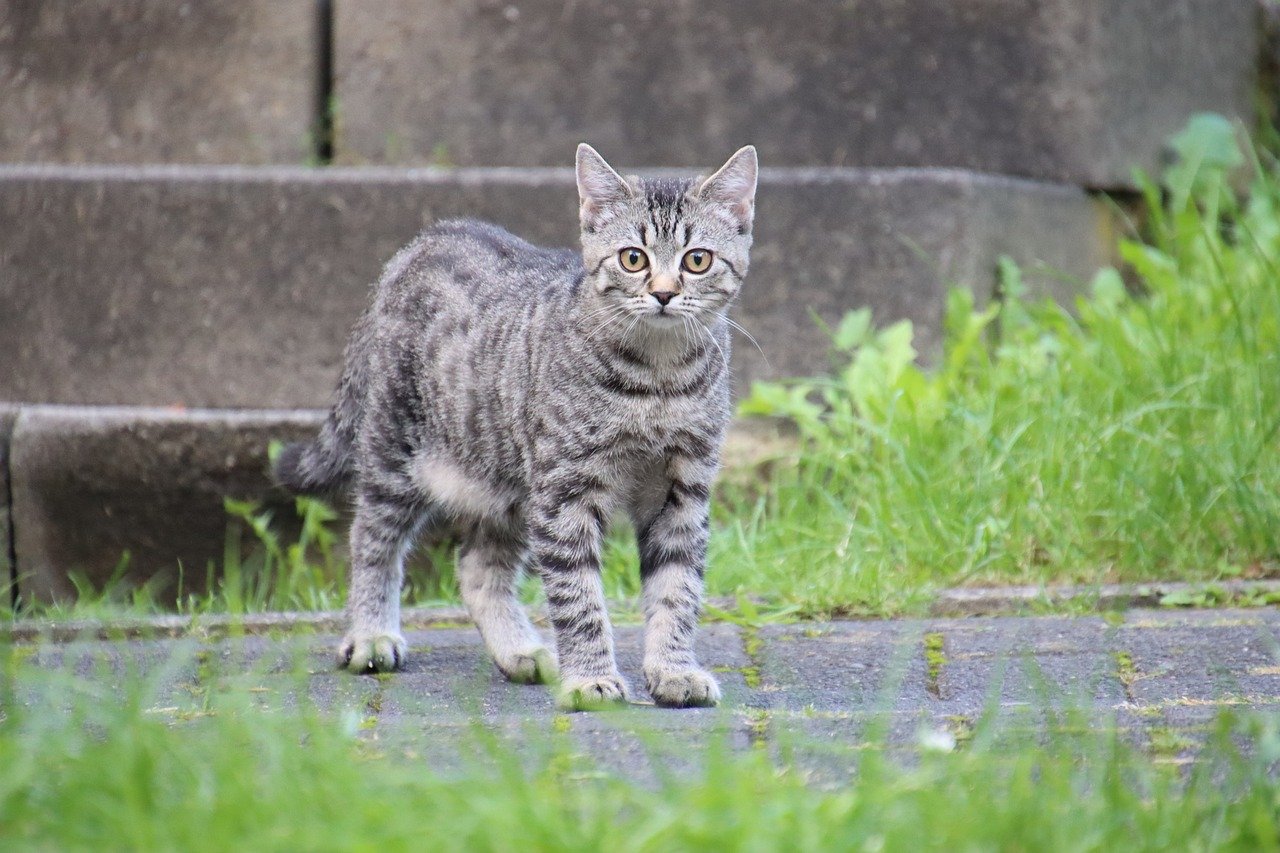
Aftercare and Bonding
After your pet's grooming session, the experience doesn't just end with a clean coat and trimmed nails. In fact, aftercare is a crucial component that can help solidify the positive feelings associated with grooming. Think of it as the icing on the cake; it enhances the entire experience and reinforces your pet's trust in you. Taking time for cuddles or engaging in their favorite activities can significantly strengthen the bond between you and your furry friend.
One of the simplest yet most effective ways to show your pet love post-grooming is through physical affection. A gentle scratch behind the ears or a soft belly rub can work wonders in reassuring them that they are safe and loved. This not only calms their nerves but also creates a lasting emotional connection. Remember, your pet thrives on your attention and affection, so make sure to shower them with it after their grooming session.
Another great idea is to offer post-grooming treats. These can be special snacks that your pet doesn’t get every day, making them feel like they’re being rewarded for their good behavior. This approach helps create a positive association with grooming, making it something they look forward to rather than dread. You can even set up a little treat station where they can pick their favorite snack after a grooming session. Here’s a quick table to help you decide on some treat options:
| Treat Type | Benefits |
|---|---|
| Soft Chews | Easy to chew and digest; great for reinforcing calm behavior. |
| Crunchy Biscuits | Helps clean teeth while providing a satisfying crunch. |
| Freeze-Dried Treats | High in protein; a tasty reward that pets love! |
Moreover, spending quality time together after grooming can significantly enhance your relationship. Whether it’s going for a short walk, playing their favorite game, or simply lounging together, these activities can turn grooming into a delightful experience. Remember, your pet is not just a pet; they are a part of your family, and they thrive on shared moments of joy and companionship.
In essence, aftercare and bonding are about making your pet feel cherished and secure. By incorporating affection, treats, and quality time into your post-grooming routine, you’re not just grooming your pet; you're also nurturing a deeper connection that will last a lifetime.
- How often should I groom my pet?
It depends on the breed and coat type. Long-haired breeds may require grooming several times a week, while short-haired breeds might only need it once a month. - What if my pet doesn't like grooming?
Start slowly and use positive reinforcement techniques. Gradually introduce grooming tools and make the experience as enjoyable as possible. - Can I groom my pet at home?
Absolutely! With the right tools and techniques, you can groom your pet at home. Just make sure to research the specific needs of your pet's breed.
Post-Grooming Treats
After a successful grooming session, it’s time to celebrate your pet’s patience and cooperation with some delicious post-grooming treats. These little rewards not only reinforce good behavior but also create a positive association with the grooming process. Just imagine how much your furry friend looks forward to those tasty morsels after a bath or a trim! It’s like giving them a high-five for being such a good sport.
When selecting treats, consider opting for something special that they don’t get every day. This could be their favorite store-bought treat, a homemade snack, or even some fresh fruits like apple slices or blueberries, which many pets love. However, be cautious with portion sizes to avoid overindulgence. Here’s a quick table to help you choose the right treats:
| Treat Type | Benefits | Notes |
|---|---|---|
| Store-Bought Treats | Convenient and often formulated for specific dietary needs | Check for natural ingredients |
| Homemade Snacks | Customizable and free from preservatives | Ensure they are pet-safe ingredients |
| Fruits | Healthy and refreshing | Watch for allergies; avoid toxic fruits like grapes |
Incorporating treats into your grooming routine not only rewards your pet but also enhances your bond. It’s like saying, “You did a great job! Here’s a little something to show my appreciation.” This simple act can turn grooming from a chore into a fun and rewarding experience for both of you. Plus, it encourages your pet to remain calm and cooperative during their next grooming session, as they will associate the process with positive outcomes.
Remember, the goal is to make grooming a stress-free and enjoyable experience. By choosing the right treats and timing them well, you can help your pet look forward to grooming days, transforming them into moments of joy rather than anxiety. So go ahead, spoil them a little after their grooming session, and watch how their tail wags with excitement!
- What types of treats are best for my pet after grooming? Look for healthy options like store-bought treats, homemade snacks, or safe fruits that your pet enjoys.
- How can I ensure my pet doesn’t become overweight from treats? Monitor portion sizes and choose low-calorie options to maintain a balanced diet.
- Can I use grooming time as playtime? Absolutely! Incorporating play can make grooming more enjoyable and help your pet associate it with fun.
Quality Time Together
This article explores effective strategies to transform grooming into a stress-free and enjoyable experience for both pets and their owners, ensuring a positive bond and a healthier lifestyle.
Recognizing your pet's individual grooming needs is essential. Different breeds have unique requirements, and understanding these can help tailor a grooming routine that keeps them comfortable and happy.
A calm and inviting grooming space can significantly reduce anxiety. Utilizing soothing sounds, familiar scents, and a non-slip surface can help your pet feel secure during grooming sessions.
Using the appropriate grooming tools is crucial for your pet's comfort. Selecting brushes, clippers, and shampoos designed for their specific coat type can enhance the overall experience.
Different brushes serve various purposes. Understanding which type works best for your pet's coat can prevent discomfort and make grooming more effective.
Using the right clippers and trimmers can minimize stress. Opt for quiet, low-vibration models to help ease your pet's anxiety during the grooming process.
Consistency is key to making grooming a positive experience. Establishing a regular grooming schedule helps pets anticipate and adapt to the process, reducing fear and resistance.
Incorporating positive reinforcement can transform grooming into a fun activity. Using treats, praise, and playtime can encourage good behavior and create positive associations with grooming.
Treats can be a powerful motivator. Offering small rewards during grooming can help reinforce calm behavior and make your pet look forward to the experience.
Integrating play into grooming sessions can alleviate stress. Engaging your pet in short play breaks can help them associate grooming with fun and relaxation.
Being aware of your pet's stress signals is vital. Understanding their body language can help you adjust your grooming approach to ensure a more positive experience.
Recognizing signs such as panting, whining, or attempting to escape can indicate your pet is uncomfortable. Being attentive to these signals allows for timely adjustments during grooming.
Implementing calming strategies, such as gentle petting or taking breaks, can help soothe a stressed pet. Creating a more relaxed atmosphere can lead to a more enjoyable grooming session.
Post-grooming care is essential for reinforcing a positive experience. Taking time for cuddles or additional playtime can strengthen the bond between you and your pet after grooming.
Offering a special treat after grooming can create a positive association. This reinforces good behavior and makes your pet look forward to future grooming sessions.
After a successful grooming session, it's crucial to spend some quality time with your pet. This not only helps in reinforcing the positive experience they've just had but also strengthens the bond you share. Think of it as a reward for both of you—a little celebration of the teamwork you've just accomplished. You might consider engaging in activities that your pet loves, whether it’s a gentle play session with their favorite toy or simply snuggling on the couch. This time together can be incredibly beneficial for both your emotional connection and your pet's overall happiness.
Moreover, you can enhance this quality time by:
- Taking a leisurely walk together, allowing your pet to explore their surroundings.
- Playing interactive games like fetch or tug-of-war, which can be both fun and physically stimulating.
- Involving them in light training exercises, which can reinforce good behavior while keeping their mind engaged.
Remember, the goal is to create a sense of joy and relaxation after grooming, making it a positive ritual that both you and your pet can look forward to in the future.
The frequency of grooming depends on your pet's breed and coat type. Long-haired breeds may require grooming several times a week, while short-haired breeds may only need it once a month.
Start slowly and use positive reinforcement. Introduce grooming tools gradually and reward your pet with treats and praise to create a more positive experience.
Absolutely! With the right tools and techniques, you can groom your pet at home. Just be sure to research your pet's specific grooming needs.
Take a break, offer a treat, and try to create a calm environment. If stress persists, consider consulting a professional groomer or veterinarian.
Frequently Asked Questions
- What are the best grooming tools for my pet?
Choosing the right grooming tools depends on your pet's coat type. For instance, long-haired breeds may require a slicker brush, while short-haired pets might do well with a bristle brush. Always opt for tools that are comfortable for both you and your pet!
- How often should I groom my pet?
The frequency of grooming varies by breed and coat type. Generally, long-haired pets need grooming at least once a week, while short-haired breeds can often be groomed every few weeks. Establish a routine that fits your pet's needs to keep them looking and feeling their best.
- What should I do if my pet shows signs of stress during grooming?
If your pet appears stressed—like panting, whining, or trying to escape—take a break. Use calming techniques such as gentle petting or offering treats. It's important to create a relaxed environment to help your pet feel secure.
- Can I use human grooming products on my pet?
It's best to avoid using human grooming products on pets, as they can contain ingredients that are harmful to animals. Always choose shampoos and conditioners specifically formulated for pets to ensure their safety and comfort.
- How can I make grooming a fun experience for my pet?
Incorporate positive reinforcement by using treats and praise during grooming sessions. You can also add short play breaks to keep the mood light and enjoyable, helping your pet associate grooming with fun times!
- What are some signs that my pet enjoys grooming?
Look for signs of relaxation, such as your pet leaning into the brush, wagging their tail, or being calm and still during the process. If they seem to enjoy the attention and the treats, you’re on the right track!
- How can I reinforce a positive grooming experience after the session?
After grooming, spend quality time with your pet. Engage in their favorite activities or offer a special treat. This helps solidify the idea that grooming is a positive experience and strengthens your bond!










